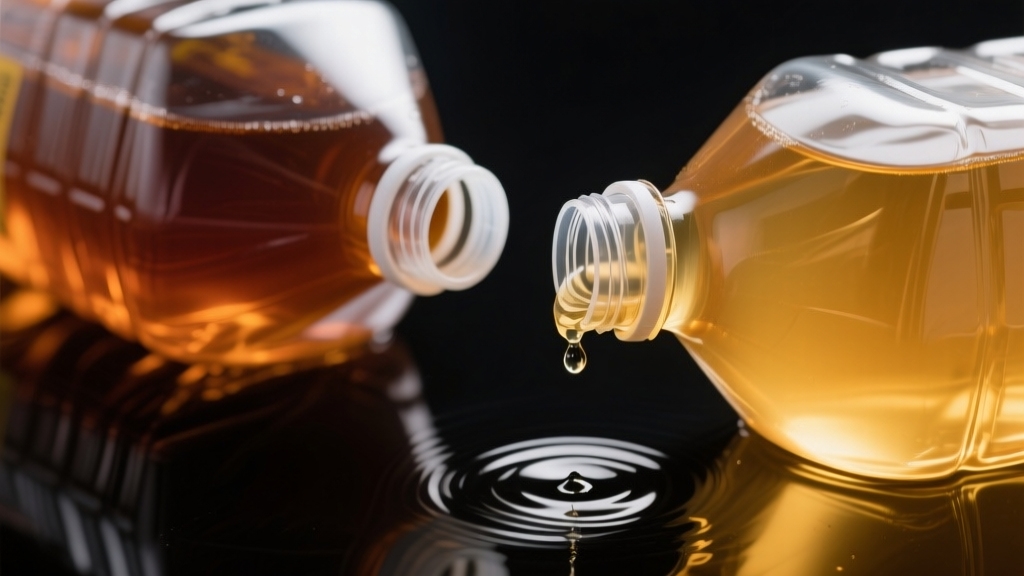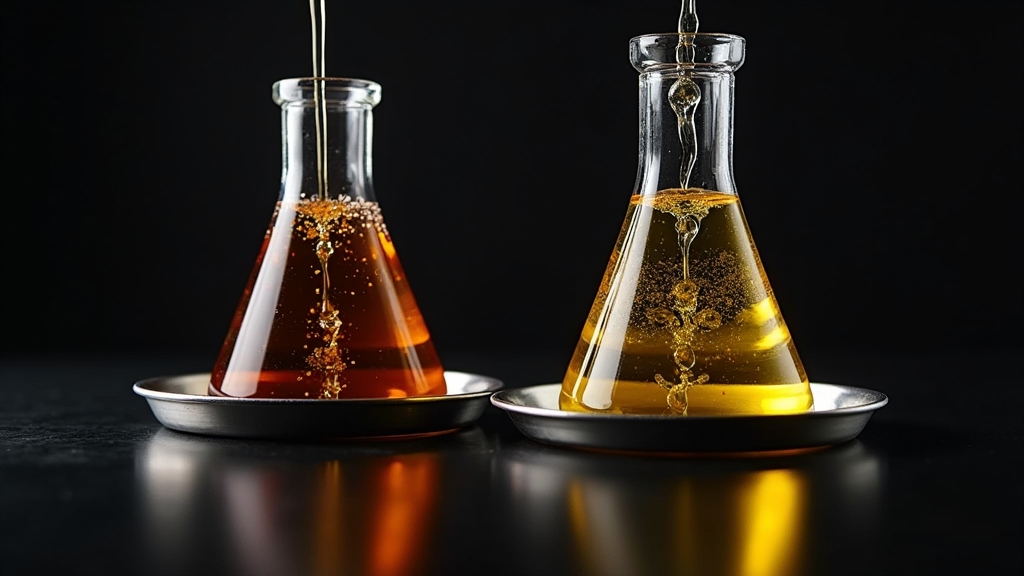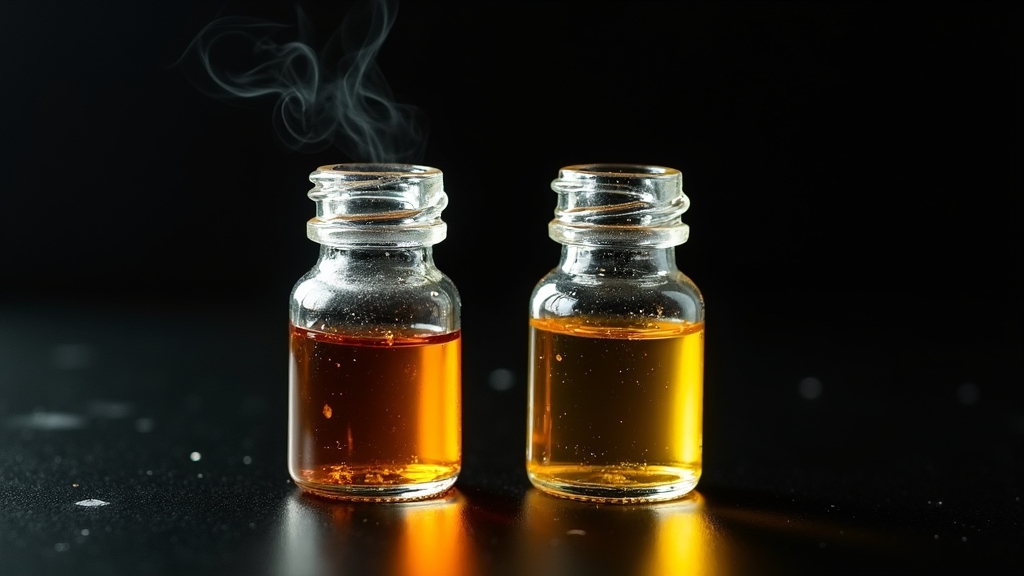Physical Address
304 North Cardinal St.
Dorchester Center, MA 02124
Physical Address
304 North Cardinal St.
Dorchester Center, MA 02124

You should use Dexron HP for high-performance GM 8-speed transmissions like the 8L90, as it has specialized additives and higher thermal resistance tailored for those applications.
Dexron VI, with advanced synthetic bases and extended service life up to 100,000 miles, suits most GM models from 2006 onward and is compatible with Dexron-III fluids. Mixing them isn’t recommended due to differing friction modifiers.
Understanding their specific formulations and OEM approvals will clarify their distinct roles.
| Feature | Dexron HP | Dexron VI |
|---|---|---|
| Primary Application | High-performance 8-speed transmissions (8L90) | Broad GM applications from 2006+ |
| Base Oil Type | Group III+ synthetic blend | Premium full-synthetic base stocks |
| Viscosity at 100°C | Originally 7.5 cSt | 6.0-6.4 cSt |
| GM Specification | GMW16974 “J” licenses | GMW16444 |
| Service Life | Standard intervals | Up to 100,000 miles |
| Cold Flow Performance | Good | Superior (-20°C: ~1,053 cP) |
| Thermal Stability | High performance focus | Superior oxidation resistance |
| Vehicle Compatibility | 2015+ Corvettes, Silverado L86 | Most GM transmissions 2006+ |
| Backward Compatibility | Limited | Compatible with Dexron-III |
| Market Availability | Limited, OEM-focused | Widely available |
| Price Range | Premium pricing | More cost-effective |
| Mixing Compatibility | Not recommended with Dexron VI | Not recommended with Dexron HP |

While both Dexron HP and Dexron VI serve as advanced automatic transmission fluids, they differ particularly in chemical formulation and specifications. Dexron HP initially used a Group 4 PAO synthetic base oil, later revised to a Group III+ blend, emphasizing friction control for 8-speed transmissions.
Selecting the right transmission fluid is crucial for maintaining transmission performance and longevity. Many manufacturers highlight the importance of choosing fluids with appropriate additive technology to optimize engine and transmission life.
Dexron VI employs premium full-synthetic base stocks, enhancing thermal and viscosity stability. Its viscosity at 100 °C is around 6.0 cSt, lower than Dexron HP’s original 7.5 cSt, promoting smoother operation and better fuel economy.
Both fluids incorporate advanced additive packages, including friction modifiers and oxidation inhibitors from Afton Chemical. Dexron VI also offers superior cold-temperature flow and oxidation resistance, extending fluid life.
Dexron HP adheres to GM GMW16974 “J” licenses, targeting specific high-performance needs, while Dexron VI targets broader applications with enhanced longevity. This difference in specification focus is similar to how motor oils like Mobil 1 and Royal Purple cater to distinct performance and durability requirements.
Because Dexron HP and Dexron VI target different transmission models and specifications, using the correct fluid is critical for peak performance.
Dexron HP is engineered for high-performance GM transmissions like the 8L90 in 2015+ Corvettes and mustn’t be substituted with Dexron VI. This distinction is similar to how engine compatibility varies in motor oils like Pennzoil and Quaker State, emphasizing the importance of using products designed for specific engine or transmission types.
Conversely, Dexron VI suits transmissions such as the 6L80 and is backward compatible with older Dexron-III fluids. Mixing these fluids is strongly discouraged due to incompatible additive packages and friction modifiers, which can impair transmission function.
Only the specified fluid type should be used for topping off to maintain transmission health, as topping off transmission fluids with the wrong type can lead to problems. Always consult your vehicle’s manual or dealer for the specified ATF. For topping off or maintenance, use the exact fluid recommended to preserve transmission integrity, as Dexron VI’s broader availability makes it preferable only where explicitly approved.
When comparing Dexron HP and Dexron VI, you’ll find notable differences in thermal stability, viscosity, and wear protection that impact transmission performance and durability.
Dexron VI offers superior thermal stability and oxidation resistance, extending fluid life and reducing sludge formation under high heat. Its viscosity remains stable at 6.4 cSt (100°C), ensuring consistent operation and smooth gear shifts via an advanced friction modifier. This stability contributes to consistent transmission performance even in demanding conditions.
Dexron HP targets high-performance transmissions with a low viscosity tailored for newer 8-speed units but lacks the extensive durability data backing Dexron VI. It is also often noted for its premium formulation and is specified by GM for certain applications such as the 8L90 transmission.
Both fluids reduce wear, yet Dexron VI’s synthetic base stocks and validated test results support extended service intervals up to 100,000 miles. Choosing Dexron VI generally provides better long-term protection and reliability across a broader range of driving conditions.
Although both Dexron VI and Dexron HP serve automatic transmissions, you’ll find that their vehicle compatibility and manufacturer approvals differ considerably.
Dexron VI is licensed by General Motors for transmissions from 2006 onward, meeting GMW16444, and is back-serviceable for many older GM and some Ford models. It suits a broad spectrum of GM automatic transmissions, making it a versatile service fill.
It also offers improved oxidation resistance, friction durability, and wear protection compared to earlier fluids. Additionally, Dexron VI maintains performance under a wide range of operating temperatures, ensuring consistent protection.
Dexron HP targets high-performance GM transmissions like the 8L90 8-speed found in 2015+ Corvettes and Silverado L86 6.2L engines, with specific OEM approvals (e.g., GM part 19300536). Its formulation is designed to handle high-pressure conditions and extended drain intervals typical of these advanced transmissions.
Dexron HP’s compatibility with older fluids or Dexron VI isn’t clearly established, and some manufacturers advise against multi-vehicle synthetic ATFs in these applications. Neither fluid suits CVT, DCT, or Ford Type-F transmissions, so always verify OEM specifications before use.

Understanding the thermal stability and oxidation resistance of Dexron VI and Dexron HP is crucial for selecting the right fluid for your transmission’s operating conditions. Dexron VI uses premium synthetic base stocks and advanced additives to resist thermal breakdown and oxidation, extending fluid life and reducing sludge.
It is recommended for use in high-power applications, such as 4L60E transmissions built for elevated horsepower. Its advanced formulation ensures superior performance compared to older fluids, much like how chemical compositions determine the specific applications of automotive products.
Choosing Dexron VI ensures superior thermal stability and oxidation resistance for longer fluid life and cleaner transmissions
Dexron HP, designed for high-performance or heavy-duty applications, offers even greater thermal resistance and oxidation inhibition, protecting components under extreme heat and stress. This enhanced protection is comparable to how certain products provide increased durability in challenging environments.
Key points to contemplate:
You’ll notice Dexron VI offers lower viscosity at operating temperatures compared to Dexron HP, improving flow and cold-start performance.
Its advanced frictional modifiers ensure smoother shifts and reduce gear shudder, unlike the higher-viscosity Dexron HP designed for older transmissions. These differences also impact wear protection, which is critical for transmission longevity.
Understanding these differences helps you select the right fluid for ideal transmission function and longevity. GM 6L80 transmissions typically require Dexron VI or Dexron HP fluids to ensure proper operation and durability.
When selecting between Dexron HP and Dexron VI, you’ll notice that their viscosity profiles differ substantially across operating temperatures. Dexron VI offers a lower viscosity baseline with about 29.8 cSt at 40°C and superior cold flow properties (Brookfield viscosity ~1,053 cP at -20°C), making it ideal for modern transmissions.
Dexron HP, conversely, maintains higher viscosity values, suited for older or demanding applications but with reduced low-temperature fluidity.
These differences impact transmission efficiency and fluid life. It is important to follow vehicle specifications when selecting transmission fluids to avoid potential damage and ensure optimal performance.
Although both Dexron VI and Dexron HP offer advanced frictional properties, Dexron VI sets a benchmark with over twice the durability and stability in friction tests compared to older fluids like Dexron III.
It improves clutch life through optimized friction modifiers, ensuring smooth shifts and reduced wear. This enhanced performance is crucial for maintaining transmission health under varying operating conditions and viscosity grades.
Dexron HP aims to surpass Dexron VI in durability and friction stability, but comparative data remains limited. GM developed Dexron VI in collaboration with petroleum and additive companies to ensure consistent viscosity and enhanced shift performance.
| Property | Dexron VI | Dexron HP |
|---|---|---|
| Friction Durability | 2x better than Dexron III | Expected to exceed Dexron VI |
| Thermal Stability | Superior | High, but less documented |
| Additive Technology | Advanced friction modifiers | Enhanced, details pending |
A critical factor to contemplate in choosing between Dexron HP and Dexron VI is their cost and market availability. Dexron VI is generally more accessible and cost-effective, priced between RM225 and RM2200 for larger volumes, while Dexron HP commands a premium due to its specialized high-performance formulation and limited aftermarket presence.
Selecting the appropriate fluid according to the manufacturer recommendations can help preserve vehicle system performance and avoid damage. You’ll find Dexron VI widely distributed with multiple packaging options, contrasting with Dexron HP’s more restricted OEM-linked availability.
Dexron VI enjoys broad global distribution and OEM licensing. The widespread availability also means that Dexron VI products typically comply with standard security protocols to ensure product authenticity.
Dexron HP targets select high-performance transmissions with limited aftermarket brands. Dexron VI offers various container sizes, from quarts to 200L drums. Dexron HP pricing trends higher, reflecting its niche application and scarcity.
Cost and availability influence your choice, but understanding how each fluid affects transmission service intervals can enhance maintenance schedules.
Dexron VI supports extended factory fill intervals up to 160,000 km (100,000 miles) under normal conditions and about 80,000 km (50,000 miles) in severe driving. GM expects Dexron-VI to last between 100,000 to 150,000 miles in all applications, with recommended fluid change intervals reflecting this extended lifespan.
Its fully synthetic formulation with advanced additives enhances thermal stability and oxidation resistance, preserving fluid integrity longer and reducing change frequency. This aligns with the benefits of synthetic oils that handle extreme conditions and extend service intervals.
Conversely, Dexron HP, designed for high-performance applications, generally follows shorter or similar intervals without explicit extended lifetime claims. Its conservative replacement schedules reflect the demands of high-stress operation despite robust anti-wear properties.
When you mix Dexron HP and Dexron VI fluids, you risk compromising transmission performance due to their distinct chemical formulations and frictional properties. These fluids are engineered for different transmission types and combining them can disrupt viscosity and lubrication balance.
You may face:
You may face shift harshness, slipping, torque converter shudder, overheating, and accelerated transmission wear.
Mixing these fluids violates OEM recommendations. Each fluid’s unique friction modifiers and thermal stability are designed for specific transmission requirements. While fluids can generally mix without immediate damage, mixing different ATFs is not recommended for custom blending because their properties do not combine linearly, leading to compromised performance and durability Compatibility and Mixing.
You should always stick to the OEM-approved fluid to maintain proper clutch engagement, shift quality, and component longevity. Avoid mixing these fluids to prevent costly repairs and ensure reliable transmission operation.
You need to understand that GM licensing marks a clear distinction between Dexron HP and Dexron VI, with the latter meeting stricter fluid specification compliance. OEM approval processes require passing rigorous tests to confirm a fluid’s performance and compatibility with specific transmission designs.
Verifying for official licensing ensures you use a product that aligns with manufacturer standards. Petro-Canada DEXRON-VI Automatic Transmission Fluid is designed to meet or exceed industry standards for transmission fluids.
Although GM licenses both Dexron VI and Dexron HP fluids under the Dexron trademark, each represents a distinct OEM approval category tailored to specific transmission technologies. Dexron VI replaced older specs for broad application, while Dexron HP targets the advanced 8L90 transmission with unique performance demands.
GM’s licensing guarantees fluids meet strict criteria on friction durability, viscosity stability, and oxidation resistance, directly linked to OEM validity.
Key GM licensing differences include:
Using the correct GM-licensed transmission fluid prevents potential damage and ensures optimal transmission performance throughout the vehicle’s lifespan.
GM’s licensing framework directly ties into rigorous fluid specification compliance, ensuring each transmission fluid meets exacting OEM standards. Dexron VI adheres to the latest GM GMW 33568 specification, providing enhanced performance and backward compatibility.
In contrast, Dexron HP complies with older standards such as Dexron IIIH and II E, reflecting less advanced formulations. This strict compliance guarantees that fluids perform reliably under specific mechanical and thermal conditions required by GM transmissions.
| Specification | Dexron HP | Dexron VI |
|---|---|---|
| GM Standard | Dexron IIIH / II E | GMW 33568 |
| Base Fluid | Mineral oil/synthetic blend | Premium synthetic base stocks |
| Friction Modifiers | Basic friction control | Advanced friction modifiers |
| Service Life | Shorter intervals | Extended intervals |
When evaluating transmission fluids like Dexron HP and Dexron VI, understanding the OEM approval process is vital. This process guarantees the fluid meets strict manufacturer standards through multiple phases: formulation development, original approval, validation, and rebrand approval.
OEM endorsements provide the highest level of assurance for compatibility. The OEM approval process ensures lubricants evolve with hardware and emissions. Key points about OEM approval:
You shouldn’t use Dexron HP in non-GM vehicles. It’s specifically formulated for GM high-performance transmissions and lacks approval for other brands. Using it outside GM can cause improper shift quality, potential wear.
Non-GM transmissions often require fluids meeting different specs, like Ford Mercon or Honda ATF-Z1, which Dexron HP doesn’t cover. Always follow your vehicle manufacturer’s fluid recommendations to guarantee ideal performance and protection.
You should know that even small Dexron VI spills can cause chronic environmental harm due to its delayed toxicity. When disposing, avoid releasing it into soil or waterways to prevent contamination.
Use licensed hazardous waste contractors to handle surplus fluids and contaminated materials, following all local regulations. Clean up spills promptly with proper gear, and report incidents to authorities.
You can check your transmission fluid quality by inspecting color, clarity, and smell. Use gloves and a clean rag, warm the engine, and park on a level surface. Remove the dipstick or fill plug, then wipe and reinsert before checking fluid level and condition.
Look for clear or pink fluid, absence of particles, and no burnt odor. Make certain fluid is at the correct temperature (115°F to 130°F) for accurate readings and consult your manual.
Think of fuel economy as a tightrope walk between friction and flow. Dexron VI improves fuel economy by maintaining stable viscosity and reducing energy loss, making your transmission run efficiently across temperatures.
Dexron HP can edge out slightly better economy under high-performance conditions due to specialized friction modifiers. However, Dexron VI’s broader compatibility and thermal stability generally offer consistent, reliable fuel savings in everyday driving, keeping your engine running smoother and consuming less fuel overall.
You can expect unopened Dexron HP and Dexron VI fluids to last about 5 years when stored sealed, tightly closed, and between +10ºC to +25ºC.
Some sources suggest they remain usable up to 10 years under ideal conditions, but performance beyond 5 years isn’t guaranteed. Keep them away from moisture, temperature extremes, and sunlight to preserve additive stability.
So, you’re caught between Dexron HP and Dexron VI? Think of it like choosing between classic rock and modern pop—both lubricate, but only one truly vibes with your ride’s transmission. Mixing them? That’s like blending oil and water—except your gearbox won’t dance.
Stick to OEM specs, respect the chemistry, and save yourself the headache. After all, your transmission isn’t a cocktail party; it demands precision, not experimentation.
Last update on 2025-12-13 / Affiliate links / Images from Amazon Product Advertising API